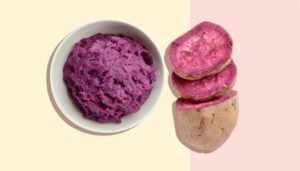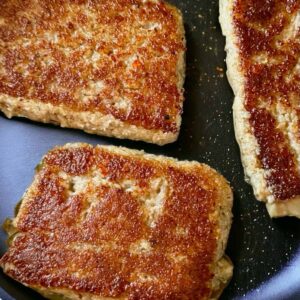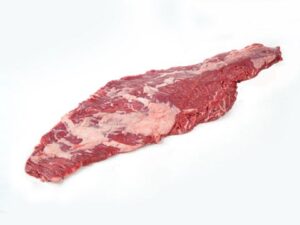
You will notice all the fancy squashes on sale if you visit a farmers’ market or farm stand to purchase pumpkins or beautiful gourds. All the larger squashes can be eaten, but the little lacquered gourds are only meant to be table decorations. Although hubbard squash has rough, uneven skin, you may quickly enjoy its sweet, flavorful flesh by following our tips.
What Is Hubbard Squash?
Large winter squash, hubbard squash often measures one foot in width and weighs between fifteen and twenty pounds. Its skin is extremely rough and can be dark green, pale blue-green, orange, or yellow in various shades. Like other winter squash, the flesh within ranges from yellow to orange.
Hubbard squash originated in the Caribbean and was named for one of the first farmers to plant it in the United States. It’s a fantastic source of riboflavin, iron, and vitamin A.
What Does Hubbard Squash Taste Like?
The sweet flavor of orange-fleshed winter squash is what you would expect from hubbard squash. Since the texture can be a little gritty, purees and soups are the most common dishes you’ll find. Its greatest flavor is enhanced by butter, brown sugar, and a small pinch of salt.
How to Buy and Store Hubbard Squash
From September to March, hubbard squash can be found, usually whole, at farmers markets and farm stands. Supermarkets frequently sell them quartered. Make careful to select squash without any soft spots or skin mold while making your purchase.
Store whole squash in a refrigerator for up to six months, or at about 50 degrees Fahrenheit. Hubbard squash takes up a lot of space, so if you have an extra fridge in the garage or basement, that makes sense. Hubbard squash flavors do not fade, but instead concentrate and become more intense while preserved.
How to Cook Hubbard Squash
There aren’t many foods you cook that are as large as a whole Hubbard squash, except from a whole turkey or ham. How then would one handle a twenty-pound squash? There are several approaches, the simplest of which is to roast the entire squash. Moreover, you can roast slices or chunks. Additionally, you can cook Hubbard squash dice in stock or water.
How to Bake a Whole Hubbard Squash
Preheat the oven to 400°F.
To keep the squash from exploding when steam builds up inside, pierce it ten times on the top and sides with a paring knife.
Squash should be placed on a sheet pan or turkey roasting pan because liquid will leak out of the squash during cooking and you want a pan to catch those liquids.
Use a fork to check the doneness; when it’s soft, roughly one hour has passed.
Scoop out the seeds after carefully cutting the squash in half. The seeds are saved and roasted similarly to pumpkin seeds.
After the squash is cooked, scoop it out of the skin and serve it as a side dish or use it to make Hubbard squash soup.
How to Roast Hubbard Squash Slices
Before roasting, Hubbard squash must be chopped and peeled if you want caramelized bits. Not only is cutting a Hubbard squash challenging, but it may also be risky. A machete-sized knife, weightlifting strength, and some wizardry would be required to make it a flat side so that it wouldn’t roll around while you were trying to chop it. Letting the Hubbard do the work for you is the simplest way to open one. Lift the Hubbard squash over your head by placing it in a sack or on a towel on the ground. The squash will burst open if you drop it on the towel on a hard surface. Then roast according to these instructions.
Preheat the oven to 375°F.
Put parchment paper between two sheet pans.
Split the Hubbard squash open.
Remove the seeds with a spoon and reserve them for later roasting.
To soften the halves, microwave them for one minute. With a chef’s knife, cut each half into smaller wedges.
After applying some olive oil to the wedges, season them with salt and pepper. It’s also wonderful to add some warm spices and maple syrup.
Roast the squash for 35 to 50 minutes, or until it is caramelized and fork-tender.
How to Cook Hubbard Squash on the Stove
To crack open the Hubbard squash, drop it; for further information, see the section on roasting Hubbard squash slices.
Scoop out the seeds, working with one piece at a time, and set aside to roast later.
To soften the halves, microwave them for two minutes. With a chef’s knife, cut each half into smaller wedges.
Apply a paring knife to each wedge to remove the peel. Cut the meat into squares of the same size.
After putting the squash chunks in a cold, salted pot, bring it to a boil. Lower the temperature to a simmer.
Cook for about 15 minutes, or until a fork inserted into the squash comes out soft. Empty.
FAQS
What does Hubbard squash taste like?
Hubbard squash is ideal for pies and soups because of its flavor, which combines sweet potatoes and pumpkin. Even though it has a lot of sweetness, this squash is best puréed because it can occasionally be mealy.
What is another name for Hubbard squash?
Botanically categorized as Cucurbita maxima, hubbard squash is sometimes referred to as buttercup squash and green pumpkin.
How healthy is Hubbard squash?
Low fat, cholesterol free, low in sodium, a good source of fiber, an excellent source of vitamins A and C.



